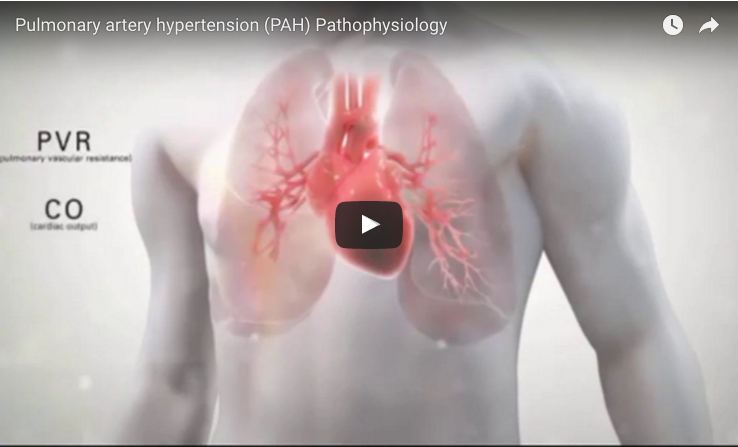The Pathophysiology of Pulmonary Arterial Hypertension

https://www.youtube.com/watch?v=64xNqlWGQaQ&t=39s
In this animated video from Gopal Sikder, viewers learn about the pathophysiology of pulmonary arterial hypertension (PAH).
MORE: Revatio as inhaled PAH treatment is more effective than tablets now available a study finds.
Pulmonary arterial hypertension is a chronic lung disease characterized by dangerously high blood pressure in the lungs. The video uses computer-generated graphics to demonstrate how the arteries become thickened over time and how the right side of the heart is affected by the disease.
The film explains the three different pathways involved in the disease — prostacyclin, endothelin, and nitric oxide — and their role in the progression of PAH. It also shares some of the causes of the disease, including connective tissue diseases or a family history of PAH.
MORE: A study has identified new gene mutations associated with heritable pulmonary arterial hypertension.
Pulmonary Hypertension News is strictly a news and information website about the disease. It does not provide medical advice, diagnosis or treatment. This content is not intended to be a substitute for professional medical advice, diagnosis, or treatment. Always seek the advice of your physician or another qualified health provider with any questions you may have regarding a medical condition. Never disregard professional medical advice or delay in seeking it because of something you have read on this website.







